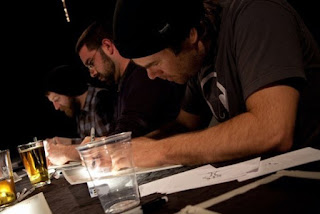This one was made during the success of Walt Disney's first animated feature"Snow White". Its a little dated, but very informative and fun to watch.
The great Glen Keane shows his process of animating a man getting out of a chair.
English Animator, Joanna Quinn demonstrates how she animates a scene.
But she also has produced a variety of personal films including this one called, "Dreams and Desires Family Ties". Her use of animated camera transitions and character expression are amazing. If you can't understand the accents, enjoy the animation, especially when the camera is strapped on the dog's back.
And here's how Joanna Quinn puts all her animation together...
If you learned
something new and enjoyed this post, please click on the ad to the right or the ad below this
article, to let us know you appreciate animateducated, Thank You!









